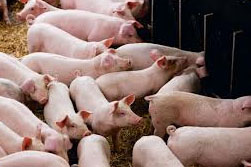Provimi: Huge increase in number of RescuePig users

Since the introduction of the RescuePig concept by Provimi, part of Cargill’s animal nutrition business, in 2007, the number of sow farmers that have installed the RescuePig system on their farm has increased rapidly.
RescuePig meets the need of sow farmers to raise healthy pigs from large litters. The success of RescuePig results from the combination of high quality feeds and technical equipment, a substantial economic benefit for the sow farmer and an innovative sector that increasingly makes use of these possibilities.
In the past year, a major increase has been seen: 65 sow farms – with on average 700 sows – implemented the RescuePig-concept. The increased use of RescuePig is the result of the intensive campaign aimed at prospective users, in collaboration with Provimi’s partners. Also, the use of RescueCups in the farrowing pens is increasing. This was partly explained in the introduction of Smooth, Provimi’s liquid prestarter, at the beginning of 2013.
RescueDecks and RescueNurseries are used to raise piglets separate from their dam. On average, farms with this system experience a decline in piglet mortality with 3 to 5%. Foster sows are no longer required, and the litter index increases (+0.08). The piglets are heavier at weaning and the litters are more uniform. Farms that apply these concepts obtain a financial benefit of up to 60€ per sow per year.
RescueCups in the farrowing pen, with the application of RescueMilk and Smooth, offer the possibility to provide extra feed to young piglets, for 24 hours a day and 7 days per week. We observe spectacular dry matter intakes with this system, up to 1 kg per piglet between birth and weaning at 28 days of age. Also, sow farmers report that RescueCups in the farrowing pens enable larger litters to stay with the sow. A major additional advantage is the low labor intensity: it is no longer necessary to provide extra feed to piglets by hand in the farrowing pen. Piglets receiving RescueMilk and Smooth via RescueCups experience less post-weaning problems and show better growth rate after weaning.











